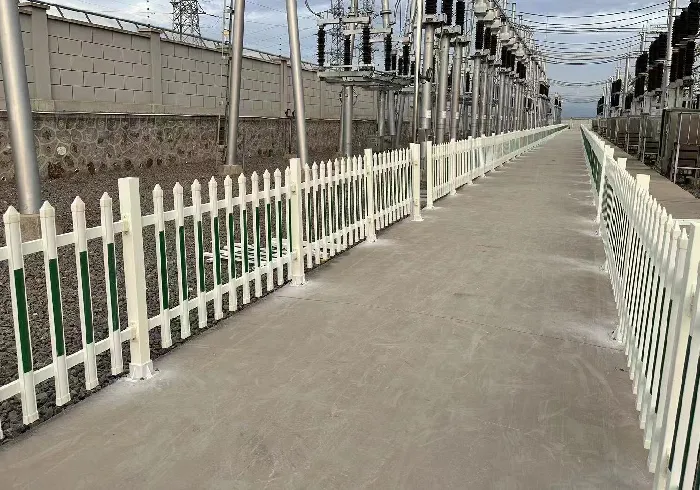loading...
- No. 9, Xingyuan South Street, Dongwaihuan Road, Zaoqiang County, Hengshui, Hebei, China
- admin@zjcomposites.com
- +86 15097380338
- Welcome to visit our website!
frp pultruded profiles
Understanding FRP Pultruded Profiles Applications and Benefits
Fiberglass Reinforced Polymer (FRP) pultruded profiles are gaining popularity in various industries due to their unique properties and advantages over traditional materials. In this article, we will delve into what FRP pultruded profiles are, their manufacturing process, key applications, and the benefits they offer.
What are FRP Pultruded Profiles?
FRP pultruded profiles are composite materials made from a polymer matrix reinforced with fiberglass. The term pultrusion refers to the manufacturing process where continuous fibers are pulled through a resin bath and then into a heated die, which shapes the material and cures it into a solid profile. This results in strong, lightweight, and corrosion-resistant products that can be designed into various shapes and sizes.
The Manufacturing Process
The pultrusion process begins with the alignment of continuous fiberglass strands, which are then saturated with a resin mixture. Common resin types include polyester, vinyl ester, and epoxy, depending on the required properties of the final product. Once the fibers are fully saturated, they are pulled through a heated die, allowing the resin to cure, and resulting in a solid, uniform profile. This process enables mass production of consistent and high-quality profiles suitable for numerous applications.
Key Applications
FRP pultruded profiles have a wide range of applications across various sectors
1. Construction and Infrastructure FRP profiles are utilized in bridges, walkways, and architectural elements due to their high strength-to-weight ratio and resistance to corrosion and environmental factors.
2. Electrical and Utility In the electrical industry, FRP is used for utility poles, riser poles, and other components that must withstand harsh outdoor environments while providing electrical insulation.
3. Transportation The automotive and aerospace industries leverage FRP profiles for components where weight reduction is crucial, without sacrificing strength or durability.
4. Marine FRP is employed in the manufacturing of boat components, docks, and marinas, thanks to its resistance to water and marine environments.
frp pultruded profiles

5. Industrial Applications In chemical processing plants, FRP profiles provide a durable solution for ladders, platforms, and other structures that may be exposed to corrosive substances.
Benefits of FRP Pultruded Profiles
The utilization of FRP pultruded profiles offers numerous advantages
1. Corrosion Resistance One of the most significant benefits is the inherent resistance to corrosion, particularly suitable for environments exposed to moisture and chemicals. This property extends the lifespan of structures significantly compared to traditional materials like steel or wood.
2. Lightweight FRP materials are considerably lighter than conventional materials, which reduces transportation costs and allows for easier handling and installation.
3. Strength and Durability Despite their lightweight nature, FRP profiles exhibit exceptional strength and can withstand high loads, making them ideal for structural applications.
4. Design Flexibility The pultrusion process allows for the creation of complex shapes and profiles tailored to specific project needs, offering greater design flexibility than some traditional materials.
5. Low Maintenance The durability and corrosion resistance of FRP profiles mean they typically require less maintenance over their lifespan, resulting in lower overall costs for end-users.
6. Thermal and Electrical Insulation FRP materials are excellent insulators, making them suitable for applications requiring thermal and electrical insulation.
Conclusion
FRP pultruded profiles represent a modern and efficient solution for various industrial applications. Their unique properties of corrosion resistance, lightweight, strength, and design flexibility make them an attractive alternative to traditional materials. As technology and manufacturing processes continue to advance, the use of FRP pultruded profiles is likely to grow, opening new avenues in construction, transportation, and various other sectors. With the increasing demand for sustainable and durable materials, FRP is set to play a vital role in the future of material science and engineering.
-
The Rise of FRP Profiles: Strong, Lightweight, and Built to LastNewsJul.14,2025
-
SMC Panel Tanks: A Modern Water Storage Solution for All EnvironmentsNewsJul.14,2025
-
GRP Grating: A Modern Solution for Safe and Durable Access SystemsNewsJul.14,2025
-
Galvanized Steel Water Tanks: Durable, Reliable, and Ready for UseNewsJul.14,2025
-
FRP Mini Mesh Grating: The Safer, Smarter Flooring SolutionNewsJul.14,2025
-
Exploring FRP Vessels: Durable Solutions for Modern Fluid HandlingNewsJul.14,2025
-
GRP Structures: The Future of Lightweight, High-Performance EngineeringNewsJun.20,2025
